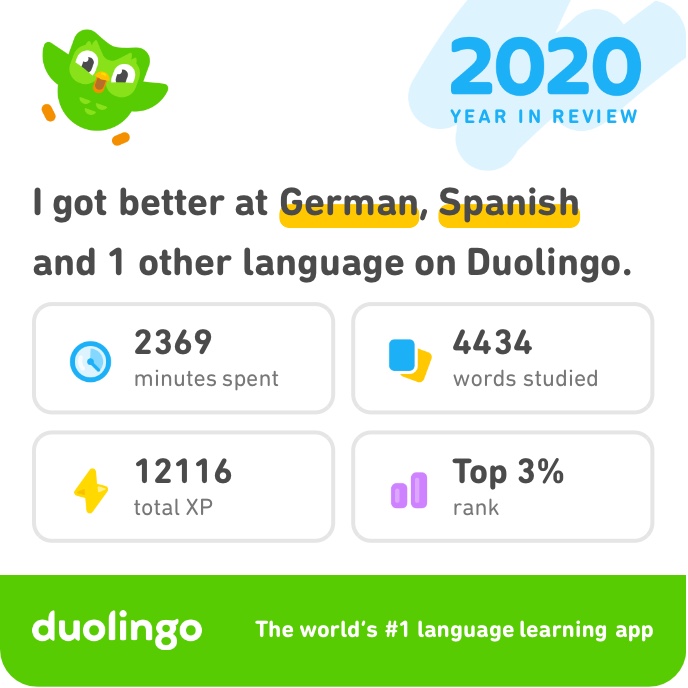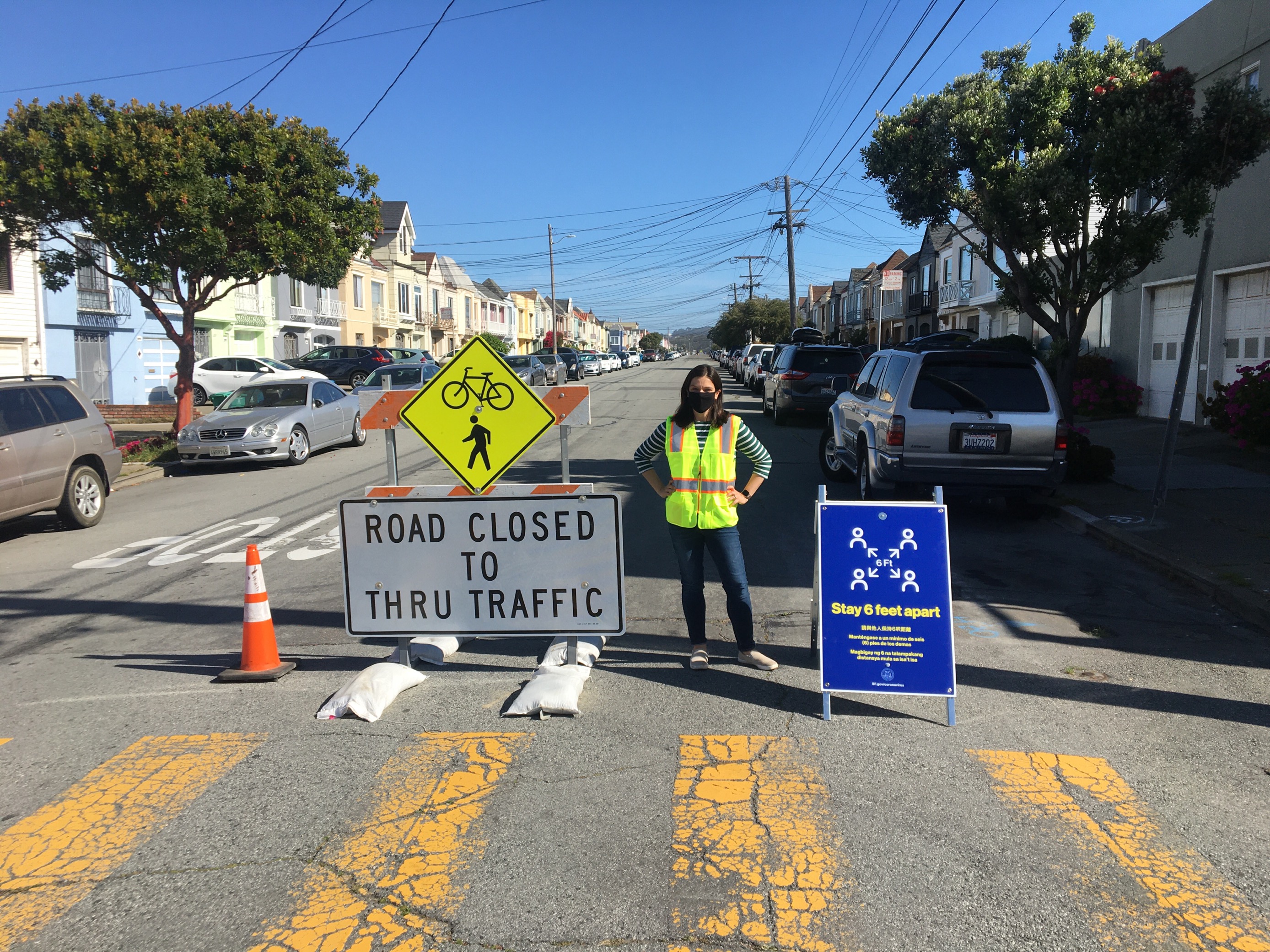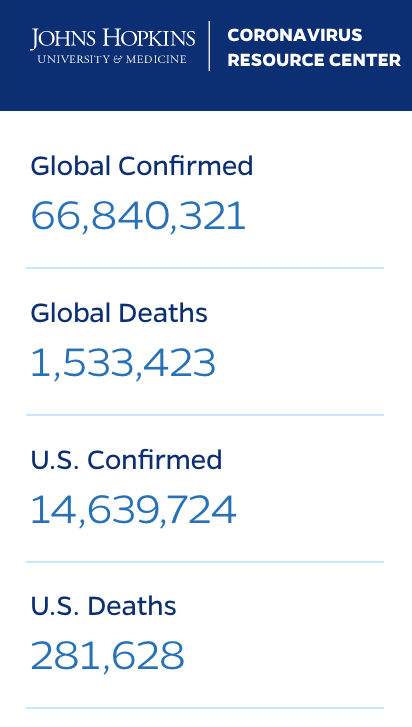
Duolingo, the language study app/platform, showed me this cute graphic summarizing my progress this year. I study every day for a couple minutes, and I’ve been using it for about 550 days consecutively…
My eavesdropping in Spanish is getting better, and I made an actual (bad) joke to myself today (about podemos vs. perdemos) which is a good sign for me, though perhaps not for anyone near me.
My Spanish translation and/or guessing ability is improving, but my independent recall and sentence formation isn’t so great, so I’ll need to do some independent writing. I’ve only had spontaneous thoughts in grammatically proper Spanish a few times, whereas I have entire conversations in my head in German, so there’s a long way to go! The Spanish past tense has really bowled me over, perhaps because I hadn’t fully mastered conjugations for the present tense, and I haven’t recovered conceptually. (I ate, you ate, s/he ate, we ate, they ate IS SO MUCH EASIER than the Spanish versions of those: female: Yo comí, tú comiste, ella comió, nosotras comimos, ellas comieron; and then the same verbs for male, but different pronouns for those last three: Yo comí, tú comiste, él comió, nosotros comimos, ellos comieron. YES, German does something similar, but I’ve been practicing that for YEARS longer!)
On the days when I want to study, but can’t focus on Spanish, I return to German. I use German somewhat regularly, thanks to a friend and Postcrossing, so it feels like laziness. Or, less frequently, I switch to French, which I’ve still cumulatively spent more app time studying than Spanish. The issue with French is the random shared words: my trés bien could sabotage my muy bien. This is a really lucky problem to have!
It’s nice of Duo, the owl mascot of Duolingo (die Eule, le hibou, or el búho, depending), to encourage me with this certificate.
I still enthusiastically recommend Duolingo as a nice way to improve language familiarity as part of a bigger study plan suited to your personal learning/method needs.



